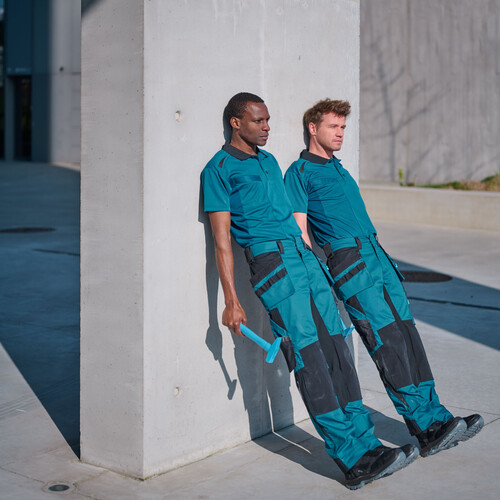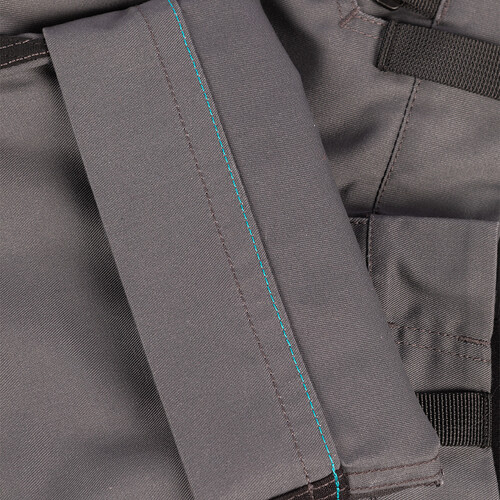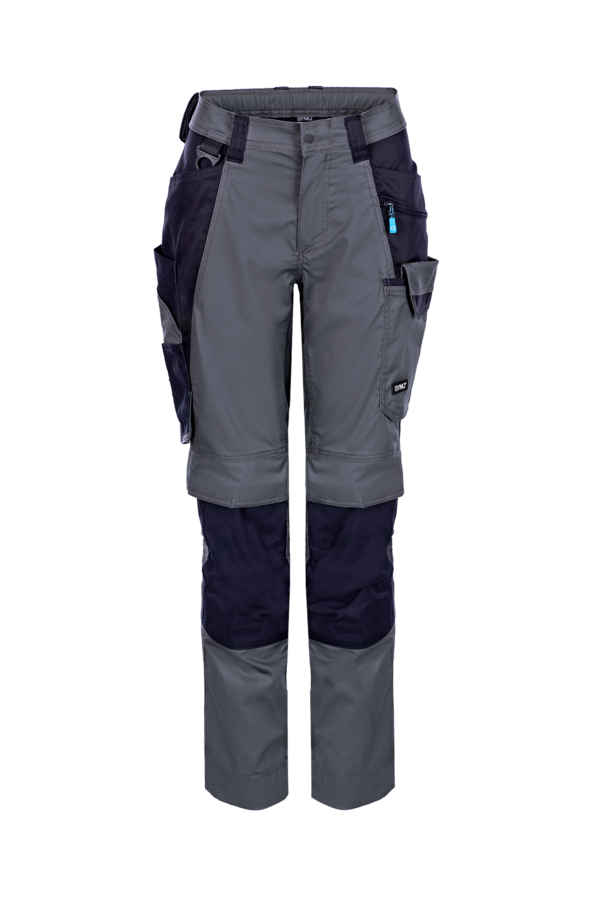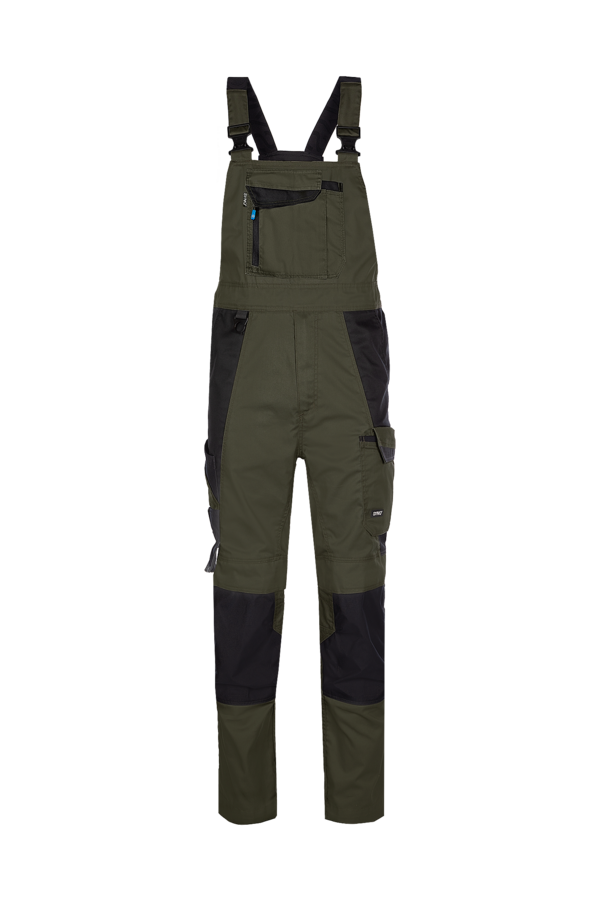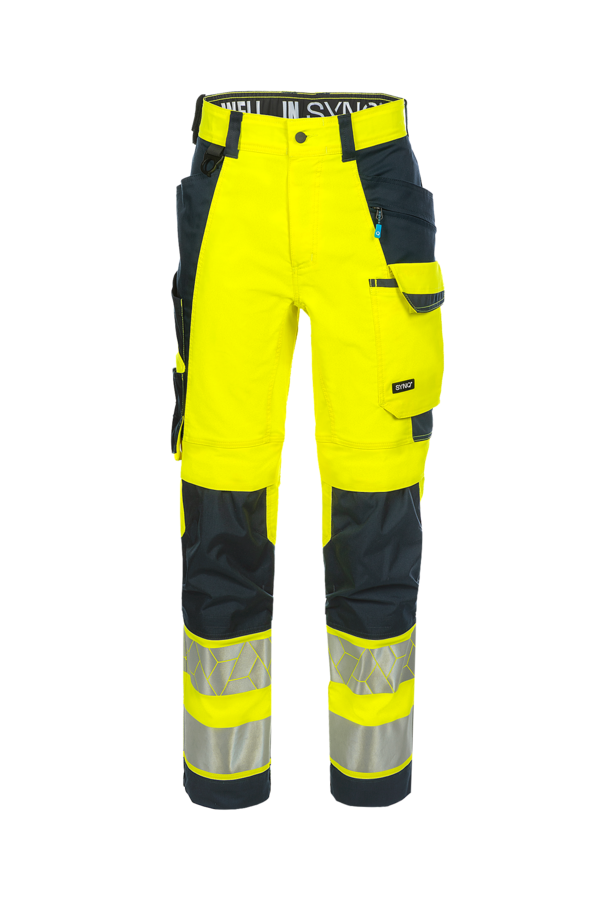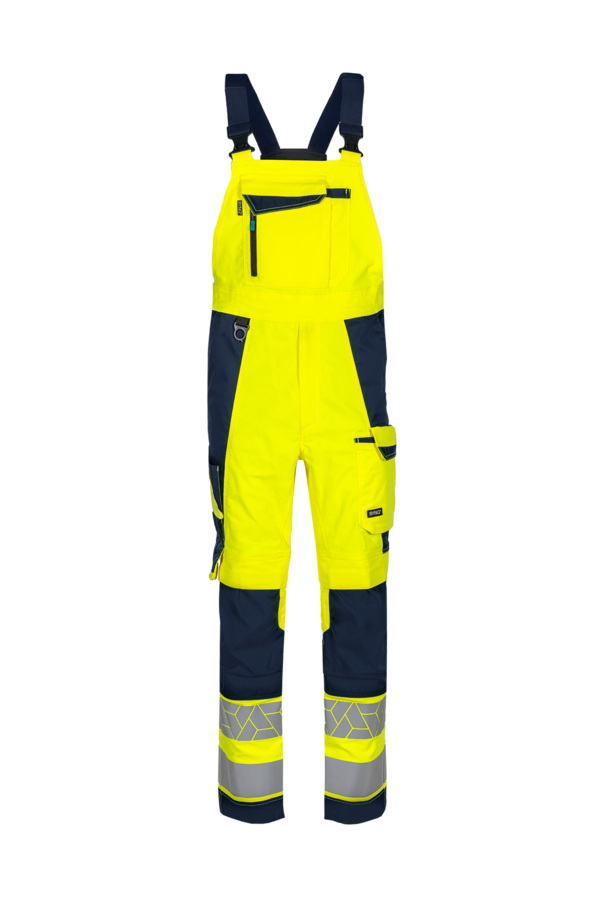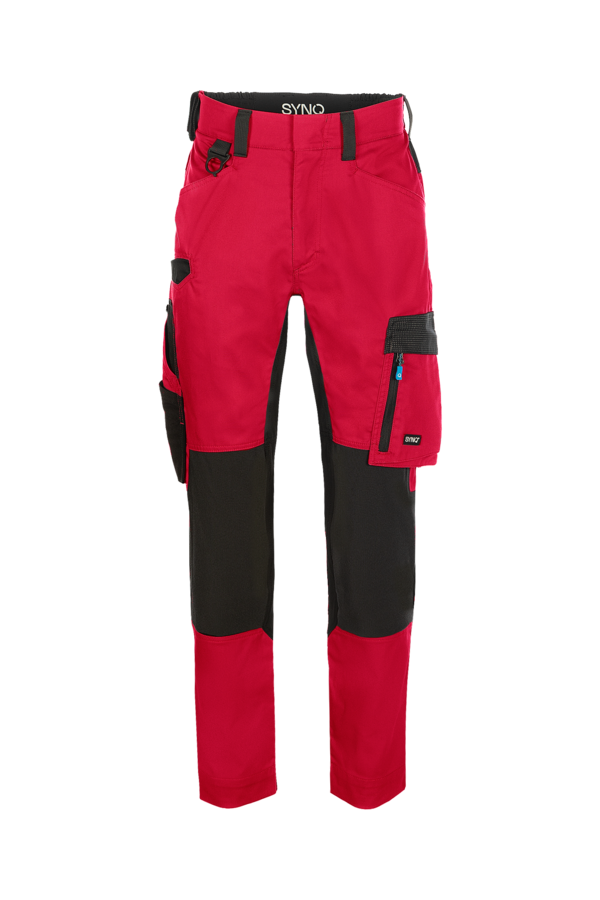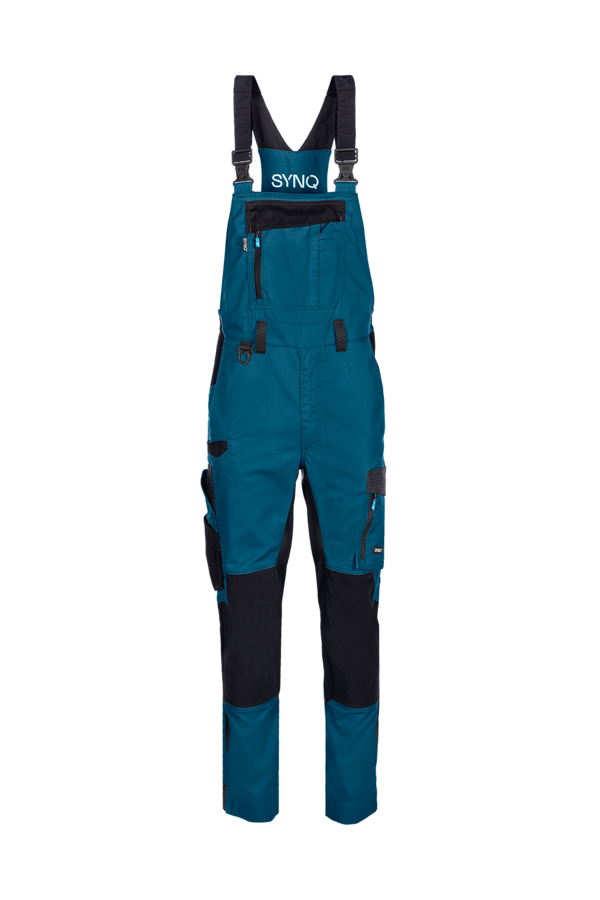Protect your knees

Why wear knee pocket trousers?
Still in doubt whether you really (k)need knee pocket trousers? Let’s dive into the main reasons why a good pair of knee pocket trousers in combination with correctly placed certified kneepads is so important to do your job more securely, comfortably and freely.
- Your safety: Avoid a doctor's visit! Kneepads make sure that small objects such as nails, shattered glass, debris, etc. on the work floor cannot penetrate the area around your knees when you are kneeling on the floor.
- Your ergonomic comfort: You might not feel it right now, but working on your knees does impact them severely over time. So invest now in a good pair of knee pocket trousers and accompanying kneepads, and avoid knee and muscle pain later.
- Your freedom of movement: No need to drag around a separate kneeling pad. When you choose to wear kneepads, you simply carry your knee protection on you, and can kneel wherever you want to. Nor do kneepads add much extra weight so you can move around freely. Finally, your hands are free more often, and you can work more confidently.

Certified trust
All our work trousers with knee pockets are certified in combination with the SYNQ Jerom kneepads.
They offer a protection type 2, level 1: which means they protect against penetration of small objects and are suitable for use on flat and uneven floor surfaces.
At what height should your kneepads arrive?
Do not buy your knee pocket trousers without having them tried on with the kneepads in first! The proof of the pudding is in the eating so definitely put your kneepads to the test first. This is the only way to be sure that they come at the perfect height. And offer maximum protection to your knees.
- The right height: how do you know? If you do the test and kneel, the middle of the kneepad should be on your knee. The kneepad should be cupping your knee. When it feels right, you can rest assured it is the right height.
- Choose your trouser length wisely: have mercy on your knees and wear the correct inside leg length. It's a crucial step in assuring that your kneepads are positioned correctly. You have the choice between a Short (S), Regular (R) and Long (L) size length. Do your kneepads arrive at the right height, but could you use a little extra length at the bottom of your trousers? Simply undo the large hem and add 5cm to your trouser legs.
- Adjust the height of your kneepads: you are in the driving seat and can even adjust your kneepads once you’ve inserted them! How does this work? The knee pocket itself has a built-in mechanism that allows you to push the kneepad up or down. Do the test and feel the difference!
How to fit kneepads into work trousers?
This is an easy job, you just have to decide which system you prefer. SYNQ work trousers offer 2 different ways of inserting your kneepads. Both are adjustable in height, are compatible with the kneepad SYNQ Jerom, and are CE approved.
The most important thing you need to know is that you insert them with the text “knee this side" towards you. Only this way, the kneepads will give you the provided comfort and protection they are created for.
Are you team bottom-loading or team top-loading? If you haven’t made up your mind, check out the pictures and accompanying explanations below so you can decide for yourself which type you prefer!

Bottom-loading knee pockets
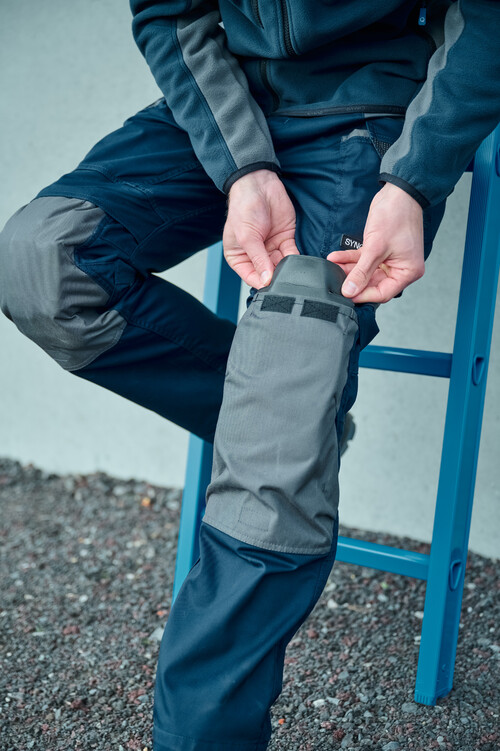
Top-loading knee pockets

Look for this symbol to identify SYNQ work trousers with bottom-loading knee pockets.

Look for this symbol to identify SYNQ work trousers with top-loading knee pockets.
When should you replace your kneepads?
The answer to this question varies widely and depends on several factors such as the quality of the kneepads, the type of work you perform, the frequency and intensity you use your kneepads, and the materials of which they are made. There is no specific timing that states when you have to replace your kneepads. But here you can read some general guidelines that may help you decide on when to replace them.
- Work environment: if you work in a more demanding work environment such as the construction industry or a finishing trade, that requires continuous and intense use of your kneepads, you will see that your knee protectors wear out fairly quickly. Don’t hesitate to replace them more frequently.
- Wear and tear: do a regular check-up and inspect your kneepads: do they show any cracks, tears, or significant thinning of the padding material? If so, they do need replacement.
- Loss of cushioning: the padding in the kneepad itself can lose its cushioning ability. You can notice this when the kneepad no longer bounces back to its original state, but remains flat. So when you feel that your kneepads no longer offer the same protection against impacts or kneeling on hard surfaces, they lost the ability to absorbing shocks and you should look for a new pair.
- New knee pocket trousers: always buy a new pair of kneepads when you buy a new pair of work trousers so they are in sync with each other, and with your needs.
In general, if you feel that your kneepads no longer give you the same level of comfort and impact protection, replace them. It’s better to replace your kneepads proactively rather than wait until they are completely worn out. Always make sure to replace both kneepads at the same time as well.



